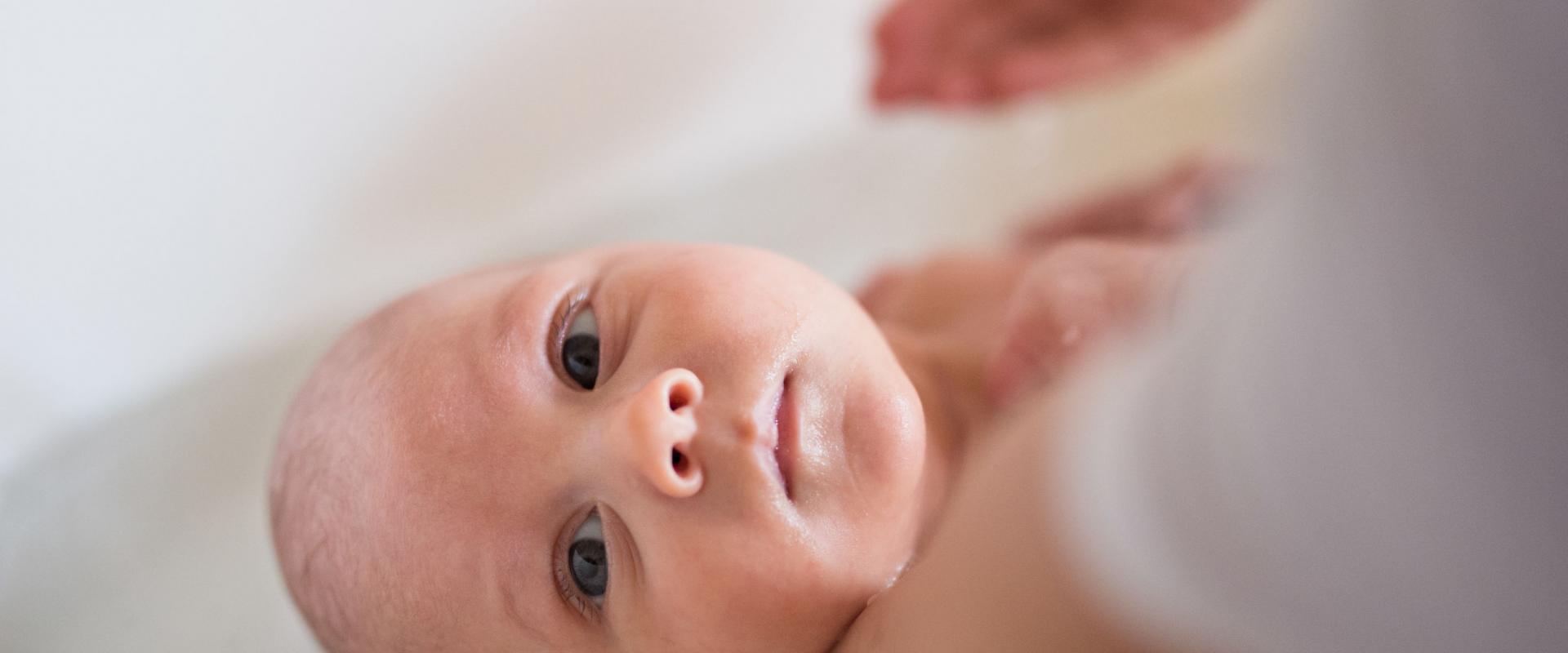
Bathing a newborn is a precious moment for parents, especially if this is your first experience. The body and skin of baby it’s very sensitive that can make you nervous and afraid when caring for baby.
Stay relax. By following this guide, the baby bathing routine can be an exciting moment that you've been waiting in every day life. There are two conditions to bathing your baby, let’s see one by one.
Bathing a newborn baby whose umbilical cord has not been released
- Prepare all baby toiletries, including soft baby soaps, washcloth clean towels, warm water and waterproof pads. You can also do it at the table to change the baby's diaper.
- Lay the baby on a soft pad, hold the back of the head and neck with one of your hands.
- Wet the washcloth with warm water, then wipe your baby's face, head and body slowly.
- To clean the eye area, use a soft cotton that is not much fiber. Dip the cotton into warm water, then clean the corners of the baby's eyes and wipe outwards. Remember, do this only if there a dirt in the corners of the baby's eyes.
- Next, clean the outer and back ears of the baby because, these areas often accumulate sweat and make babies uncomfortable.
- Don't miss the baby's curves and folds, such as the armpits, inner thighs and back of the baby's knees that are prone to sweating.
- Furthermore, clean the baby's genitals and buttocks, starting from the front to the back.
- Lift the baby with your hands and wrap it with a dry towel.
- Gently pat baby's body until dry.
- Finally, give your baby hug to keep them warm.
Bathing a newborn whose umbilical cord has been released
- Prepare all your baby's toiletries, including very soft baby soap, washcloth and clean towels.
- Prepare a baby bathtub filled up with warm water with a temperature around 37 degrees Celsius as high as 5 to 8 centimeters. If you don't have a thermometer, use your elbows or the inside of your wrist to adjust the temperature of the water that is not too hot and not too cold for the baby.
- Hold the back of the baby's head and neck, then move the baby into the bath with the position lying rather upright. Do it slowly so that your baby is not surprised by the warm temperature in the water.
- Begin by wiping the baby's face with a washcloth, then wipe the head and whole body. This aims to adjust the baby's body temperature with warm water so the baby does not feel cold.
- Use very soft and suitable soap for newborns. Start by rubbing baby face, head and the whole body as well. Don't miss the baby's curves and folds, such as the baby's armpits and thighs.
- Dip soft cotton that doesn't have much fiber in warm water, then wipe carefully the corners of the eyes and the corners of the baby's nostrils if there is a dirt.
- End by cleaning the intimate area and baby's bottom, starting from the front to the back.
- If your baby is male and has been circumcised, carefully clean the part of his penis. While if the baby hasn't been circumcised, you don't need to pull the foreskin so it doesn't trigger an infection.
- Rinse the baby's body thoroughly with a washcloth. Make sure there is no residual soap attached to the baby's body.
- Lift the baby with your hands and wrap it with a dry towel.
- Gently pat baby's body until dry.
- Lay the baby on a soft mat, then put diaper, clothes and give a warm kiss to express your love.
The main key when bathing a newborn is to remain calm and confident. It is undeniable if you feel nervous and afraid of your vulnerable baby's body. However, by keep learning all the time you will get used to and be good at bathing your baby.
Moms, the choice of toiletries products for your beloved baby need to be considered, don't use the product that can affecting allergies for your baby. Choose safety toiletries products and have been tested dermatology to reduce the risk of allergies. Don't be confused to find baby products that are suitable for your baby skin, because there are Bambi Bath Series (Bambi Hair & Body Bath, Shampoo and Milk Bath) which have been tested hypoallergenic and dermatology so that it is safe and suitable for sensitive baby skin.

